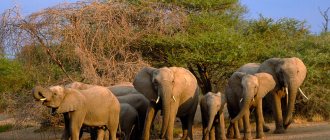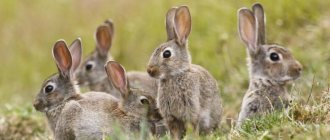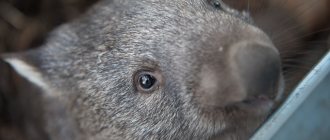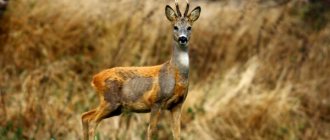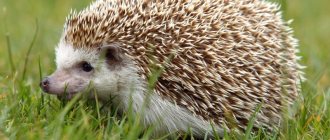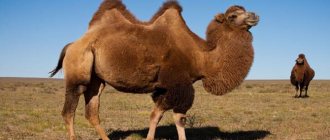The lion belongs to the order of carnivorous mammals, and the subfamily of big cats. In the wild, lions can be found in Africa, Iran, India and southern Europe. Due to serious changes in habitat conditions and destruction. Today, lions can be seen in the wild in sub-Saharan Africa and the Gir National Park. This park is home to about 300 individuals. Not everyone knows that lions used to be found in southern Europe, the Middle East and the Caucasus. But these animals were exterminated by humans. Vladimir Monomakh in his (Teaching) (XII century) talks about a meeting with a lion. These days, the lion is listed in the International Red Book.
The lion is probably the most famous predator on our earth. Just think how many states (bear) this predator on their coat of arms. With so many stories being told, the children at the zoo finally want to see it. Leo is the king of beasts, everyone knows this from early childhood. He is fair, powerful, noble. Everyone knows that these animals live in Africa, but few people know that there is also an Asiatic lion. True, only a small population of these animals (200 individuals) has survived. The Asiatic lion lives in only one place - the Gir Forest in India. Previously, predators lived in southern Europe, the Middle East, India and the Caucasus. The modern habitat of lions is limited to Africa. He prefers steppes and savannas with the presence of reservoirs, where huge herds of ungulates, zebras and antelopes graze nearby.
Description of the animal
Lions are large representatives of the class of mammals, the cat family. Their entire body is covered with yellow-brown short hair. And only males have a mane of a light brown or reddish-black hue. It appears in males at the age of three years. If a lion lives in the wild, then its fur is thicker and tougher.
Males are always larger than females. The first ones weigh up to 190 kg, and the animal whose body weight is 272 kg was recognized as the record holder. Females are smaller - up to 130 kg. The body length of males does not exceed 3.5 m including the tail. Females have less - about 2.5 m. At the same time, the height at the withers of a mammal ranges from 1.1 to 1.3 m. The mouth of an adult predator contains 30 teeth; in females, four mammary glands develop with age.
Animals living in different countries may differ in size and appearance. The greatest genetic differences are observed in African and Asiatic lions, although they differ little in appearance.
Habitat
Lions live on different continents. The variety and appearance of the predator depends on its habitat. In South Africa, a few decades ago there was not a single wild individual, but later their population was restored in nature reserves and national parks.
Animals came to Asia from Greece . Today they occupy significant wild areas in India and other Asian countries, preferring forests. In Africa they can be seen in savannas or plains. But lions look for places where there are shelters. They are necessary for relaxation during the heat and hunting.
Savannas, forests and plains are not the only places where lions live. Desert and tropical conditions are not suitable for them. But the animal can choose to live in mountainous areas, steppes and lands with shrubby vegetation. In the wild, the life expectancy of a lion reaches 14 years; in nature reserves it increases by 2-3 years.
Mammal species
There are several species of mammals in nature. They differ in appearance as well as habitat. Main types of lions:
- Asiatic;
- Barbary;
- West African;
- Congolese;
- Maasai;
- Transvaal.
Asian, Persian or Indian, the lion lives in India. Its population is low, so it is listed in the Red Book. But thanks to the creation of national parks, the number of animals is growing every year. The Asian mammal is distinguished by a longitudinal fold on its abdomen and its small size.
The Barbary, or Atlas, beast used to live in Africa, but today this species is considered extinct. The last description of the lion dates back to the early 1960s. It was one of the largest predators of its family. The body length of males reached three meters without a tail, and the weight reached 300 kg. The color of the coat and mane depended on climatic conditions: the warmer it was, the lighter the lion.
The West African, or Senegalese, predator lives in western Africa. There are about 1,000 such individuals left in the world, they are on the verge of extinction. The males of this species have a weak mane, and they themselves are much smaller than the animals living in the east and south of the continent.
Congolese mammals occupy territories in western Uganda and Congo. A report by zoologist Joel Azaf Allen indicates that such lions are distinguished by a darker color - golden chocolate. They live on the tops of savannas, where they get their food. And also in the scientist’s stories there is information that some individuals are found in forests and meadows.
Masai predators live in eastern Africa. These are mammals with high, thin legs, a small muzzle and an inflexible back. But these are quite large lions: weight - 160-200 kg with a body length of 2.5-3 meters. The volume of the mane in males depends on how old the predator is. The cub and young individual have small growths that do not hide their ears. The heads of older lions are completely covered with long and fluffy hair, and environmental conditions also affect the thickness of the mane. The warmer and more humid the climate, the more luxuriant the hair.
Transvaal lions live in southern Africa. They are distinguished by their long body (up to 2.8 m) and high paws, as well as the color of their mane - it is almost black. Rare white predators are also found in South African forests. This rare mutation is found only in nature reserves and national parks.
White lions
These are not hybrids, but animals with reduced melanin production. The cause of this very rare phenomenon is a recessive gene. As a result of its exposure, a very light color appears, which can vary from creamy beige to white. Some white lions have some parts of their bodies painted this color, and others creamy; there are individuals with an even white-cream color.
Often white lions, descriptions of which are often found in specialized literature, have blue eyes (which is also explained by low levels of melanin). Today, the planet is inhabited by only about three hundred white individuals. Special programs have been developed to preserve these animals. Living in the wild, lions with this color have a difficult life: this color unmasks them, making hunting difficult.
Reproduction and offspring
The lioness is able to copulate at the age of four, and the male must grow to five. They can breed throughout the year. Females are in estrus for four days, and only one out of five periods results in pregnancy. From 1 to 6 children appear at a time, and gestation lasts only 3.5 months. If the offspring dies, the female goes into estrus again. Cubs are usually born every two years, and breeding peaks during the rainy season.
Newborn lion cubs weigh up to 2 kg, they are blind until the 11th day of life . After two weeks they begin to walk, and after four they are already running. The cubs remain with their mother for up to 10 months, continuing to feed on her milk. But until they are one and a half years old, they remain dependent on the adults of the pride. The female gets food and shares it with the cubs, teaching them to hunt.
If the mother of other cubs dies, any female can take them for herself to raise. When the hunting period begins, the hungry female abandons the weak babies to catch prey and eat. Often in such cases, lion cubs die from hyenas and other predators.
For the sake of procreation, a male can mate twice an hour, performing up to 3000 acts per day. Usually males do not fight for females, and the head of the pride has an advantage - he can choose any partner.
Males can form groups to fight off females from other families. Most often, the leader of the pride holds his place for two years, then he is overthrown by a younger challenger. The struggle for power is accompanied by fierce battles, during which lions are seriously injured and sometimes die.
The winner can kill the cubs of defeated predators. Then he takes possession of females that were previously inaccessible to him. During battles, females try to protect little lion cubs, which is why they often die.
Features of behavior
The social structure of lions is a pride. Participants can leave it or come from other families. The composition of each level of society is the same:
- 2−3 males;
- 4−5 females;
- 3−4 teenagers;
- 2-3 cubs.
Males often move from one pride to another, capturing other lionesses. Usually such militant coalitions are formed from brothers. One of them becomes the head of the family, the rest help him protect his partners and offspring. The larger the coalition, the longer it controls the pride.
Females do not show any dominance in their community. The daughters stay in their mother's territory, watch over their sisters, and then feed each other's cubs. Thanks to this behavior, raising lion cubs is not difficult; they quickly learn everything. Predators are active at night and sleep during the day. They prefer to hunt at dawn or late evening.
Lions easily find a common language with other members of prides. Thanks to their special signs and uncomplicated nature, they simply connect. Predators have a greeting ritual: rubbing the head and tail, as well as short moaning sounds. Males constantly mark their territory: they spray urine and rub their sides against tree trunks.
After a year, predators begin to growl; to do this, they sit down or stand up straight. The roar is necessary for communication with other members of the family, and it is also used as a defensive signal or a demonstration of aggression during an attack.
Lion lifestyle
Many lions live in groups (prides) in a certain territory. A pride usually includes 5-6 related females, 2-3 males, as well as cubs of both sexes. Upon reaching sexual maturity (2-3 years), males almost always leave the pride, while females remain (although they can leave it voluntarily). Thus, in addition to prides, there are also wandering lions (usually males), most often they stay alone, but they can also gather in groups or join other prides (if they are accepted).
The role of breadwinners in the pride is performed by females, since they are more agile and flexible. The mane of males also has an impact, due to which they are susceptible to overheating and rapid fatigue. Females hunt in groups, acting in a coordinated manner, leaving no chance for their prey. Sometimes males also take part in the hunt.
It is interesting that the responsibilities in the pride are distributed among the lions: some hunt, others take care of their offspring, and some guard the borders from strangers (males drive away intruders, and females drive away strangers). Thanks to this social organization, each of the lions in the pride is in business and can feel confident.
Predator food
Lions prefer to hunt in groups; they rarely attack alone. They usually choose victims larger than themselves. It is more difficult for males to hide because of their large body and mane, so the breadwinners of the pride are mainly females. Although males behave much more aggressively during feeding, they try to get larger pieces.
The basis of lions' diet consists of different animals:
- gazelles;
- zebras;
- antelope;
- buffalos;
- birds;
- reptiles;
- fish;
- rodents.
Weak individuals have to feed on eggs, amphibians, and food leftovers from vultures and hyenas. In Africa, lions often compete with cheetahs and leopards. A clash may occur between predators over undivided territories.
Sometimes lions themselves become prey. They fall into wire traps or become victims of hunters. Sometimes predators eat carrion - carcasses deliberately poisoned by humans, as a result of which they die painfully. Trophy hunting of mammals is still permitted in six African countries.
Lion and man
Due to their interesting appearance, lions are known in every state. The predator is a symbol of England, so it is highly valued in this country. Mammals attract tourists to Africa, which has a beneficial effect on the economic state of the continent. They also serve as objects for scientific and research work.
The population of Africa is afraid of lions, as predators can attack livestock and people. When there is enough food in the surrounding areas, mammals will not harm the household. But if they have no one to hunt, then they can feed on livestock.
When a lion is deprived of his habitat, he goes to the nearest settlements. Sometimes they carry a disease called feline immunodeficiency virus, which is similar to HIV. The animals themselves do not suffer from it, but it can be fatal for pets.
Cape and Barbary lions are considered extinct. The Asian species is not numerous, its population still needs to be restored today. For this purpose, national parks and reserves were created in India and Africa.
Since 2001, scientists have been using artificial insemination techniques to increase lion numbers. This complex process makes it possible to rejuvenate the gene pool of predators. Born cubs are introduced into different prides almost immediately after birth in order to reduce conflict between them and those mammals that grew up in the wild. Nursing mothers do not give up on such lion cubs; they feed them with their milk and raise them like their own.
Lifestyle
No other predator, except lions, has such an organization of coexistence. Perhaps this explains why the lion is the king of beasts. A pride is a fairly large group of animals, in which, as a rule, there are several females with offspring and one or two males. Sometimes there are prides consisting of only females, but most often this indicates that the male has died, and soon a young leader will take his place.
Sometimes a full-fledged pride of lions numbers up to forty animals, but more often they are much smaller. It numbers on average fifteen to eighteen animals. The Leo's lifestyle is measured and leisurely. During the hot daytime hours after a meal, all family members gather in one place and relax.
A pride of lions is a unique structure from which everyone benefits: the males are fed, the females are protected. As a true ruler, the lion competently rules over his domain. All animals living in the pride territory belong to the king of beasts. But here it should be emphasized that lions never kill extra animals for future use. They know very well how much food is needed to feed a family.
Curious facts
There are several unusual facts associated with lions. Thanks to observations, researchers found that predators rest more than 20 hours a day. Adults sleep or simply lie in the sun, the cubs can play. Hunting takes approximately 3-4 hours, but mammals also take short breaks between attacks on victims.
Another interesting fact about lions is that they can express their emotions through gestures and sounds. Before mating, males approach females and rub their noses against their necks. Before attacking, predators take a threatening pose. And they warn about a threat with a roar or a drawn-out sound, reminiscent of a groan.
Lions easily interbreed with other members of the cat family. The following hybrids are known:
- liger - lion and tigress;
- tigerlev - lioness and tiger;
- leopon - lion and leopard;
- Yagulev - jaguar and lion.
In terms of physical characteristics, mixed individuals are not inferior to purebred lions. Sometimes they can even exceed them in body length or weight. Their lifestyle and character are no different - they are predators living in prides and hunting in groups.
Many scientific works are devoted to lions; the topic of predators is quite popular among researchers. Unusual mammals, the males of which differ from females not only in appearance, but also in habits, attract tourists to Africa and Asia. Numerous visitors enjoy watching the behavior of predators, playing with their cubs, and watching lions hunt.
Relationships in the Pride
A strict hierarchy reigns in the lion family, which is embedded in the consciousness of animals at the level of instinct: a well-fed leader, a kind and reliable protector. For this reason, the head of the pride, an adult lion, starts the meal first. Until he finishes it, no one can even come close to the prey. For disobedience, the violator will face severe punishment: he may be expelled from the family.
Having had enough, the lions play with the babies. It must be said that they are very patient with lion cubs, sometimes even showing amazing tenderness. However, the main process of education goes to the females. They all raise their young together. Not a single female will ever refuse milk to a baby if his mother has gone hunting.


